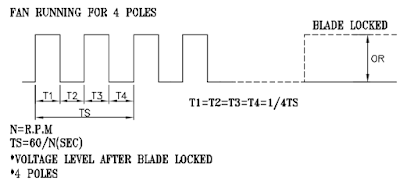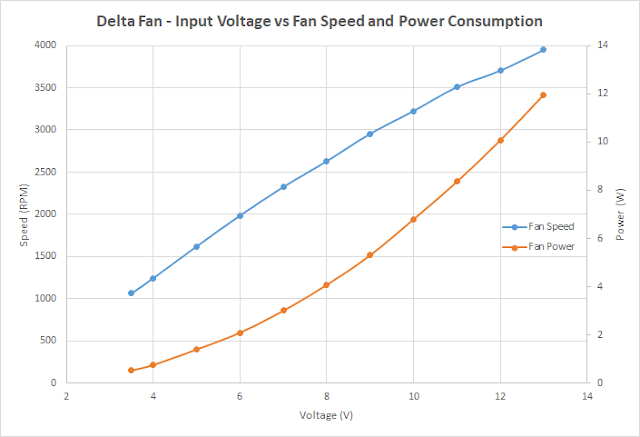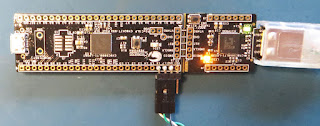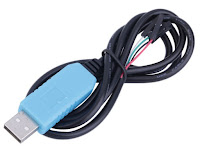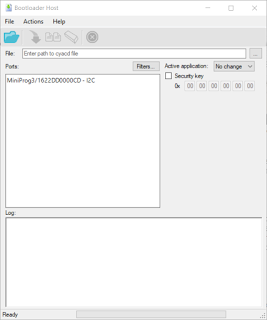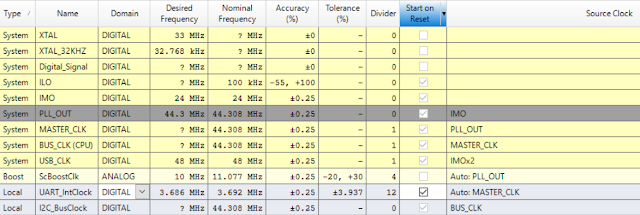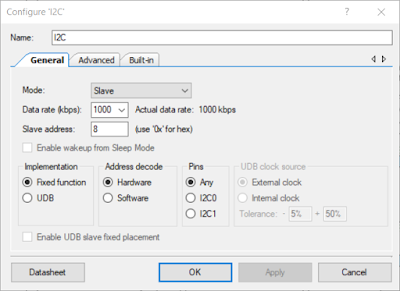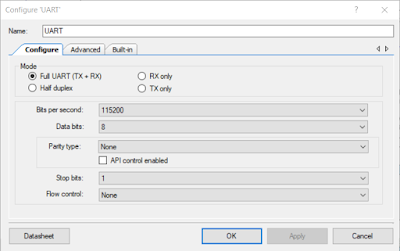Listed below are the test results for the USB, UART and I2C communications.
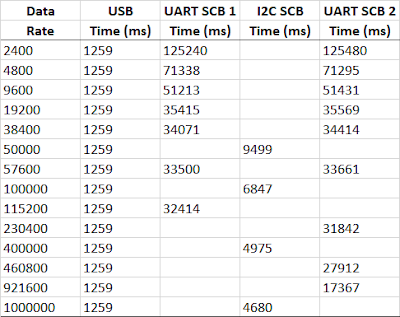 |
| Cypress Bootloader Download Times for PSoC5 |
A few items should be noted in the above table. Firstly the USB speed is 'constant'. Appropriately the Cypress Bootloader Host application does not display a baud rate option when the PSoC5 USB port is selected. Secondly the Kitprog UART and I2C interfaces operate to 115200 baud and 100,000 khz as detailed by Cypress.
Graphing the results provides a pertinent visual of how much faster the USB interface, shown in blue, is over Kitprog or a standard UART interfaces. The Kitprog I2C interface does deserves an honourable mention as it closer in download times to the USB compared to UART.
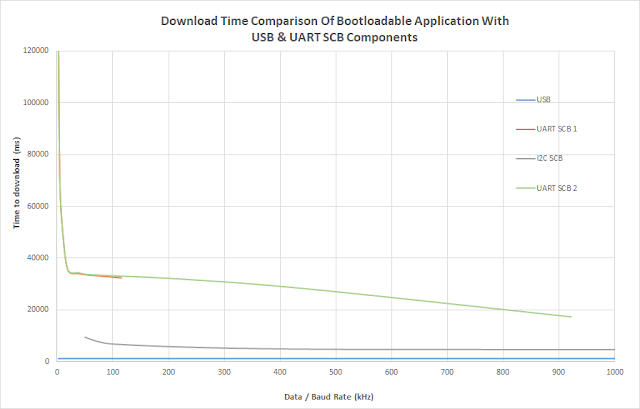 |
| Graphed Cypress Bootloader Download Times for USB, I2C and UART |
Code and Project
The code snippet for the Bootloader application as taken from the Cypress USB PSoC 5 example is listed below.
/*******************************************************************************
* File Name: main.c
*
* Version: 3.0
*
* Description:
* This example project demonstrates the basic operation of the Bootloader and
* Bootloadable components when the communication interface is a USB.
*
********************************************************************************
* Copyright 2015, Cypress Semiconductor Corporation. All rights reserved.
* This software is owned by Cypress Semiconductor Corporation and is protected
* by and subject to worldwide patent and copyright laws and treaties.
* Therefore, you may use this software only as provided in the license agreement
* accompanying the software package from which you obtained this software.
* CYPRESS AND ITS SUPPLIERS MAKE NO WARRANTY OF ANY KIND, EXPRESS OR IMPLIED,
* WITH REGARD TO THIS SOFTWARE, INCLUDING, BUT NOT LIMITED TO, NONINFRINGEMENT,
* IMPLIED WARRANTIES OF MERCHANTABILITY AND FITNESS FOR A PARTICULAR PURPOSE.
*******************************************************************************/
#include <main.h>
/*******************************************************************************
* Function Name: main
********************************************************************************
*
* Summary:
* The main function performs the following actions:
* 1. Indicates that the bootloader project is running by turning on the LED.
* 2. Starts the bootloader component and it waits for the application update.
* After 10 seconds, the code jumps to the application if it is available.
* Otherwise waits forever for application upload.
*
* Parameters:
* None.
*
* Return:
* None.
*
*******************************************************************************/
int main()
{
/* Indicates that the bootloader is running. */
#if (CY_PSOC4)
RGB_LED_ON_RED;
#else
TURN_ON_LED4;
#endif /* (CY_PSOC4) */
/* Enters the bootloader to wait for the application update. */
Bootloader_Start();
/* Bootloader_Start() never returns. */
for (;;)
{
}
}
/* [] END OF FILE */


